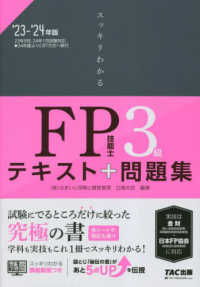基本説明
著者は独デュースブルク大東アジア研究所現代日本言語文化学科所属。研究分野「都市の言語接触-東京における言語インフラストラクチャー」。
"Linguistic Landscapes" is the first comprehensive approach to language on signs. It provides an up-to-date review of previous research, introduces a coherent analytical framework, and applies this framework to a sample of signs collected in Tokyo. "Linguistic Landscapes" demonstrates that the study of language on signs provides a unique research perspective to urban multilingualism.
Full Description
Linguistic Landscapes is the first comprehensive approach to a largely under-explored sociolinguistic phenomenon: language on signs. Based on an up-to-date review of previous research from various places around the world, the book develops an analytical framework for the systematic analysis of linguistic landscape data. This framework is applied to a sample of 2,444 signs collected in 28 survey areas in central Tokyo. Analytical categories include the languages contained and their combinations, differences between official and nonofficial signs, geographic distribution, availability of translation or transliteration, linguistic idiosyncrasies, and the comparison of older and newer signs, among others. Combining qualitative and quantitative methods, the analysis yields some unique insights about the writers of multilingual signs, their readers, and the languages and scripts in contact. Linguistic Landscapes thus demonstrates that the study of language on signs has much to contribute to research into urban multilingualism, as well as the study of language and society as a whole.
Contents
1. Introduction
2. Semiotic Background and Terminology
3. Previous Approaches to the Linguistic Landscape: An Overview
4. Summary
5. Case Study: Signs of Multilingualism in Tokyo
6. Conclusions
References
Appendix: The 28 Survey Areas







